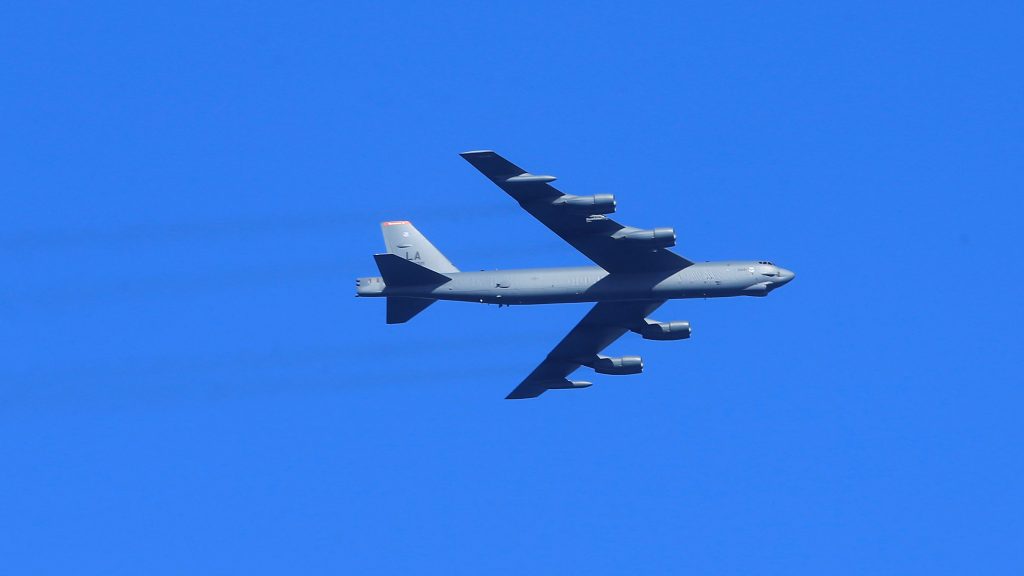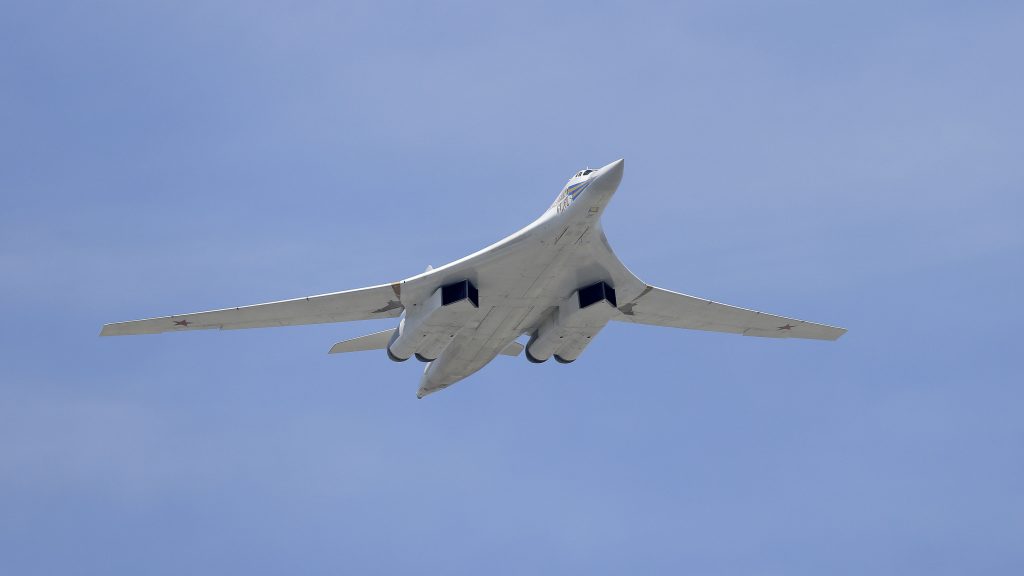U.S. and Russian bombers test airspace over European Arctic

Russian and American long-range bombers and numerous other military aircraft have been flying missions over the Barents and Norwegian Seas.
On September 15th, an American B-52 long-range strategic bomber was flying close to Russian air space in the European Arctic. The huge bomber came north outside the coast of Northern Norway, turned east in the Barents Sea and flew north along the west coast of Novaya Zemlya before turning west again north of Franz Josef Land. The plane then flew south along the west coast of Spitsbergen (Svalbard) and continued south across the Norwegian Ocean between Iceland and Norway, a route map made by Mil Radar shows.
The B-52 took off and came back to the British air force base in Fairford. The map-plots are based on the aircraft’s radio signals, since military planes normally fly with their transponders turned off.
A B-52 flying so close to Russian airspace in the European Arctic is very rare.
15 SEP: USAF B52 61-0015 CHAOS43 full Oceanic route passing through Bodø Oceanic, Murmansk Oceanic and Iceland Radio HF ATC sectors pic.twitter.com/mkjAdMzsok
— Mil Radar (@MIL_Radar) 15 septembre 2018
Russian bombers under escort
Then, on September 20th, five Russian strategic bombers, two Tu-160 and three Tu-95, took off from the air bases in Ryazan and Engels (both southast of Moscow) towards the Barents Sea.
The two Tu-160 from Engels airbase continued from the Barents Sea and over international airspace of the Norwegian and North Seas, the Russian Defense Ministry reports. Several MiG-31 fighter jets from Monchegorsk Air Base (northwest Russia) followed the strategic bombers out from the Kola Peninsula.

During the mission, which lasted for 14 hours, the strategic bombers refueled in air.
Also on Thursday, September 20th, two Tu-22M3 bombers from Olenya Air Base south of Murmansk (northwest Russia) were flying Barents and Norwegian Seas mission. The planes were met over the Norwegian Ocean by two American F-15s scrambled from Keflavik Air Base in Iceland to monitor the flights of the two Russian bombers.
Surveillance aircraft
A British surveillance Raytheon Sentinel aircraft was flying north on a Barents Sea mission, Mil Radar plots show. A day after, an America WC-135 surveillance plane, often referred to as the “nuclear sniffer” took of from the Mildenhall Air Base in England for a Barents Sea mission.
WC-135 can detect and identify radioactive isotopes from nuclear weapons testing as well as releases from reactors or other sources. As previously reported by the Barents Observer, the same “nuclear sniffers” have been on Barents Sea missions on several occasion, believed to be linked with Russia’s testing of the new nuclear-powered cruise missile taking place at Novaya Zemlya.
Related stories from around the North:
Canada: Canada’s defence minister says military upgrades part of plan to strengthen Arctic sovereignty, CBC News
Finland: Russia “would see enemies” if Finland joined NATO, president Niinistö tells German paper, YLE News
Norway: Retired military leader worries Norway’s Arctic would be vulnerable in conflict between West and Russia, The Independent Barents Observer
Russia: Russian navy boosting armament on northwestern bases, satellite images show, The Independent Barents Observer
Sweden: Sweden to buy U.S.-made Patriot air defence systems, Radio Sweden
United States: U.S. fighter jets intercept Russian aircraft west of Alaska, Radio Canada International



